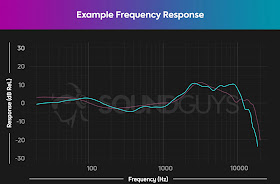I stood in my office looking out the large north facing
window. Under the row of pine trees, small birds bounced around, shuffling
through the leaves, looking for something to eat. These weren’t the ubiquitous sparrows,
nor the numerous finches, not even my favorite black capped chickadee. These
birds were rounder, with darker heads and white bellies. Juncos. The Dark-eyed
Juncos are winter birds in South Dakota.
The seasons had changed. The
darkness of winter was coming quickly. As the days shortened, the juncos ushered
in the cold and the shadows. I stood
staring out that window at the group of chubby juncos with silent tears streaming down my face.
We would love to hear from you!
Sunday, November 6, 2022
The Juncos Usher in the Gloom of Winter
Saturday, October 1, 2022
Cultural Influence: From Silly Green lawns to Silly Church Services
 |
| Killing in the name of LAWN! |
About a month ago, while taking out the garbage, I saw our next-door neighbor standing on his front porch, beer in one hand and a garden hose in the other. Connected to that hose was a large green bottle of lawn fertilizer/weed killer that he was indiscriminately spraying on his perceived lackluster yard. The smell, although familiar, still burned my nostrils and caused my eyes to run like a millstream. As I made my way back into the house, searching for Kleenex and an antihistamine, I began to wonder: where did our obsession with perfectly groomed green lawns come from? Obviously, this was a product of culture, which begs the question: do you think most cultural changes are positive or negative? I don't believe it's always an either-or question; I do think we have to weigh cultural changes on how it positively or negatively affects the population as a whole.
Concerning the American penchant for meticulously manicured lawns, I would say this cultural shift is negative. While every Tom, Dick, and Lary spray noxious chemicals on his property, we lose more and more of our natural fauna and flora. But damn it, our lawns look fabulous!!!
An excellent article entitled The American Obsession with Lawns explains the history of this cultural shift. One of the taglines from this article is the statement: "Lawns are the most grown crop in the U.S.—and they're not one that anyone can eat; their primary purpose is to make us look and feel good about ourselves."
"Making us look and feel good about ourselves." I wonder how much of this has infiltrated Christianity and our Churches? Has our attempts to look and feel good inadvertently removed the metaphorical flora and fauna of our Churches? Recently a Facebook friend posted a video of their church service where the worship band was playing: What's the frequency, Kenneth, by REM to apparently help the congregation tap into the Holy Spirit's "frequency." Decent song, but I don't think the Apostle Paul would have recommended this tactic to Timothy to raise the church's spiritual awareness.
I could drone on for hours, but I'm more interested in your thoughts on these matters:
1. Do you have a well-manicured green lawn? (No judgment...well, maybe a little:)
2. Do you think culture has positively or negatively affected today's Christian church?
3. Are you a fan of REM's music?
 |
| Tap into our frequency and comment below. |
Sunday, August 21, 2022
Pole Dance
The college friend, Munch, who lives in Montreal in the movie Away We Go isn’t ever far from my mind. Yea, a fictional character from a movie most of you haven’t seen is always somewhere near the top of the pile of noodled thoughts in my brain.
Mark and I have loved this movie since we first saw it in the early months of our marriage. We often go back to it. It’s a sweet pleasure we share, just the two of us.
And yet, I tell everyone I know to watch this movie, but most don’t. Starring John Krasinski and Maya Rudolph in early in their careers; a little known film from 2009- most people avoid attempting the search function on prime.
But we watch it together once every 12 to 18 months or so.
The plot, and this particular subplot sting more now than it did in 2010. In 2010 I didn’t understand Munch and her pole dance. She didn’t make much sense to me, but I enjoyed the Canadian stop in the progressive travel plot of the movie.In 2010, I thought Munch and her husband had it all. They had adopted a gaggle of diverse kids ranging in age from 5 to 16. They lived in a beautiful brownstone and were still in contact with their besties from college. It looked like an amazing life, one in which I had hoped to live in a few short years.
I didn’t fully understand the desperate dance at the random strip club on amateur night. I didn’t understand the look of known pain she exchanged with her husband as she was up on that pole while her college friend looked on stunned. It made little sense to me then. And yet now, over a decade later, I've exchanged similar looks with my own dear husband.


